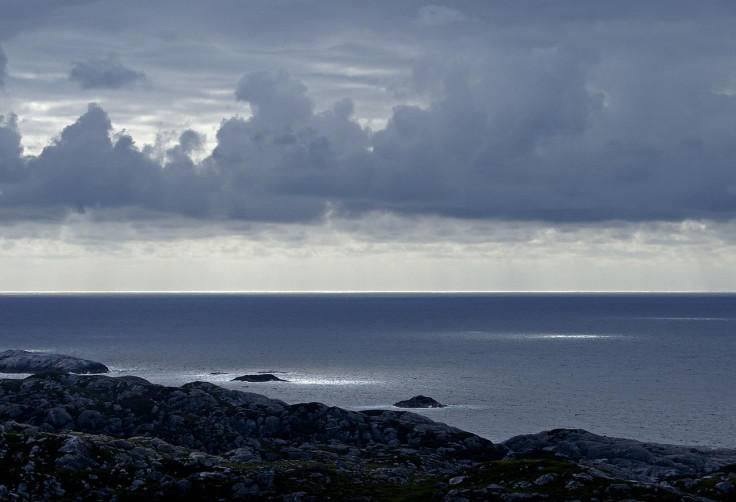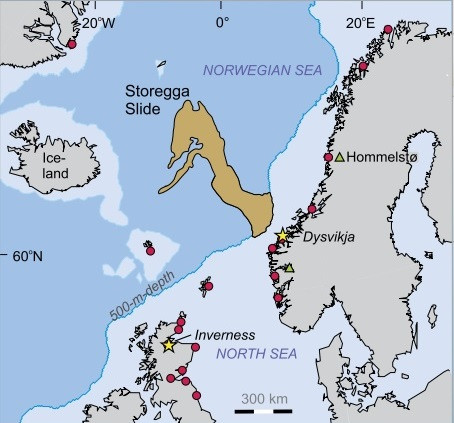Huge North Sea tsunami 8,000 years ago decimated Stone Age populations in Norway and Scotland

A massive tsunami 8,150 years ago decimated Stone Age populations living in Norway and Scotland after they returned to coastal regions in preparation for winter.
The tsunami, which scientists have previously said created a "North Sea Atlantis", was the result of one of the largest submarine slides ever recorded.
The landslide, known as the Storegga Slide, took place off the coast of Norway and generated waves about 40m high. Deposits from the tsunami have been found in north-eastern England, Scotland, Greenland and Norway. In terms of size, the tsunami was similar to that seen in the Indian Ocean in 2004.
Scientists have now discovered what time of year the tsunami happened, finding that had it taken place just a few months earlier, populations would have been safe from the devastation it caused.
In their study published in the journal Geology, Knut Rydgren and Stein Bondevik, Sogn og Fjordane University College, Sogndal, Norway, examined moss samples to find out when the event took place.
"At that time, more than 8,000 years ago, the Stone Age people would move up into the mountains to hunt reindeer and elk in the summer, and then in the late autumn many of them returned to the coast to settle down for winter," Rydgren told IBTimes UK.
"If it had happened in the summer, many of these people would not have been struck by the tsunami. If it happened in the late autumn when they returned, most of them would have been hit."

Deposits from the Storegga tsunami contain samples of the moss Hylocomium splendens. Some of them retain their green colour and chlorophyll suggesting live burial. The moss has a growth cycle where new segments branch off from the previous year's growth.
"Measurements of intact chlorophyll ... indicate that the greenish mosses were alive and were killed and buried within hours of the tsunami striking land rather than being redeposited," the study said. "Sudden burial and subsequent deposition of impermeable marine mud must have protected the plant material from light and oxygen that would otherwise have destroyed the chlorophyll."
Analysis of the moss showed that segments were more mature than those generally found in July and August, and similar maturity levels to those found from October to December.
"By examining and comparing the growth patterns of the moss ... we found out that it happened in late October. The population was probably decimated," Rydgren said.
While exactly how many people were living in the areas affected at the time, it is thought the Norwegian and Scottish coastlines were "prime areas" for Stone Age humans: "Numerous excavations show that settlements were situated on or near the former shores. Rock carvings depicting hunting and fishing from boats, and settlements on distant islands, suggest advanced maritime skills," the authors wrote.
"For those who survived the tsunami, the loss and destruction of dwellings, boats, equipment, and supplies must have made the following winter very difficult."
© Copyright IBTimes 2025. All rights reserved.






















